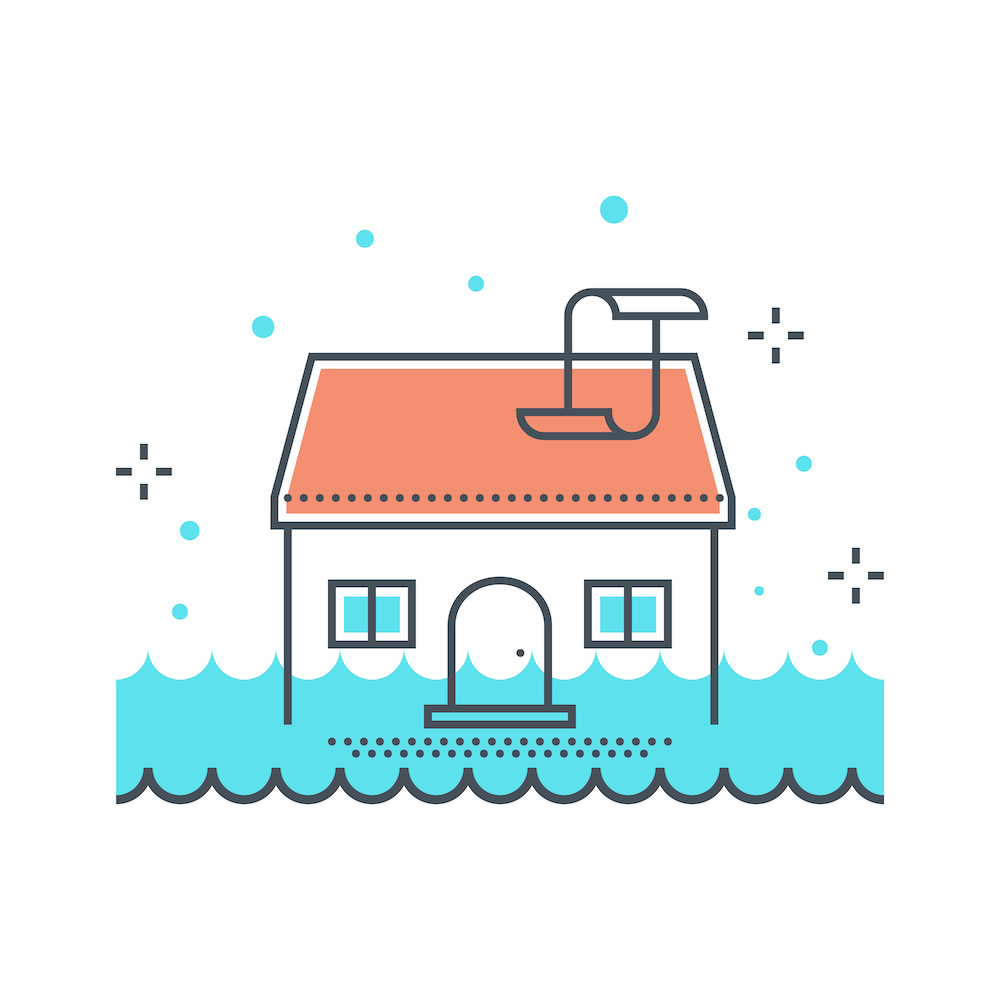Buying a House in a Flood Zone

If you are shopping for a new home, you should always check flood zone maps and ratings before putting in an offer to have a full understanding of the risks that your new home may face. A home located in a flood zone can be more expensive to insure as well as more likely to be damaged when a major storm hits.
Keep reading to learn everything you need to know about flood zones.
What Is a Flood Zone Exactly?
While most areas and houses can experience flooding during a bad storm, some homes are at a much higher risk then others, and that can lead to higher insurance premiums. Flood zones typically fall into a low, moderate, or high risk.
You can check the Federal Emergency Management Agency (FEMA) website to see where any houses you are considering fall as far as flood risk. The FEMA website has flood maps for most neighborhoods in the country. The maps show the flood risk for the properties based on flood patterns and previous flooding events.
Using the maps homebuyers can see how likely it is that the property they are looking at is prone to flooding. If the home is located in an area that has a 1% or higher chance of flooding it is considered a high risk area. The 1% chance of flooding is considered the base flood rating or the 100-year flood rating which means that over the course of 30 years (typical mortgage term) these homes have a 1 in 4 chance of flooding.
FEMA has broken flood zones into two main categories:
Special Flood Hazard Areas (SFHAs): These flood zones are labeled with a A or a V and they have at least a 1 in 4 chance of flooding over the course of a 30 year mortgage. Homes in a SFHA must carry flood insurance and the National Flood Insurance Program’s (NFIP’s) floodplain management regulations must be enforced in these areas. If you are considering a home in a SFHA you should price flood insurance before making a final decision as you will be required to carry a flood insurance policy.
Non-Special Flood Hazard Area (NSFHA): These areas are designated with a B, C, X Pre- and Post-FIRM marking. Homes in a NSFHA zone are considered to be a low to moderate risk for flooding. They are not in immediate danger of flooding and homeowners are not required to carry flood insurance. However, flooding can and does occur in these areas so you may want to consider a flood insurance policy. According to FEMA data, roughly 25 percent of all flood claims happen in a NSFHA.
Your Lender May Require Flood Insurance
If you are getting a government backed mortgage such as an FHA, Veterans Affairs or USDA mortgage and the house is located in a high-risk flood zone, you will be required to carry flood insurance. Even if you are using a private lender or a mortgage not backed by the federal government, there is a high likelihood that your lender will require flood insurance if the home is located in a high-risk flood zone.
It should be noted that some lenders may require flood insurance even if the home is in a moderate flood zone area. The only way to avoid lender requirements is to purchase a home outright, without a mortgage.
Types of Flood Insurance
Flood damage is not covered by a standard homeowners policy so you must carry flood insurance to be protected against it. You can purchase flood insurance from the National Flood Insurance Program (NFIP) or you can often find flood insurance in the private insurance market. Here is a quick overview of both options:
National Flood Insurance Program (NFIP)
If your local community participates in the NFIP program, you can usually purchase flood insurance through the NFIP. These flood policies are backed by the federal government. According to the NFIP, their program is available in 23,000 communities. However, NFIP policies do have limitations and coverage caps. Here are the major limitations to the policies:
- Coverage cap: These policies are capped at $250,000 for dwelling coverage and $100,000 for personal property which means that if your home will cost more than $250,000 to rebuild or you have more than $100,000 in personal possessions to protect you may need to supplement your coverage in the private market.
- No additional living expenses: Many private market policies will offer additional living expenses coverage which will help pay your day-to-day bills if you cannot live in your home due to flood damage. It will help cover costs such as hotel and restaurant bills and other living expenses while you are out of your home. A NFIP policy does not offer this coverage.
Private Flood Insurance
While private flood insurance is typically more robust than a NFIP policy, it is not available in every community and is typically more expensive. Here are a few advantages of a private flood insurance policy:
- No coverage caps: Private flood insurance doesn’t typically come with coverage caps so you can protect 100 percent of your home’s value as well as your personal belongings.
- Additional living expenses coverage: Most private flood insurance policies offer additional living expenses coverage as part of the policy which can be a major advantage if your home is unlivable while it is being repaired or rebuilt.
Call now to review your free flood insurance quotes at 888-620-1954!
